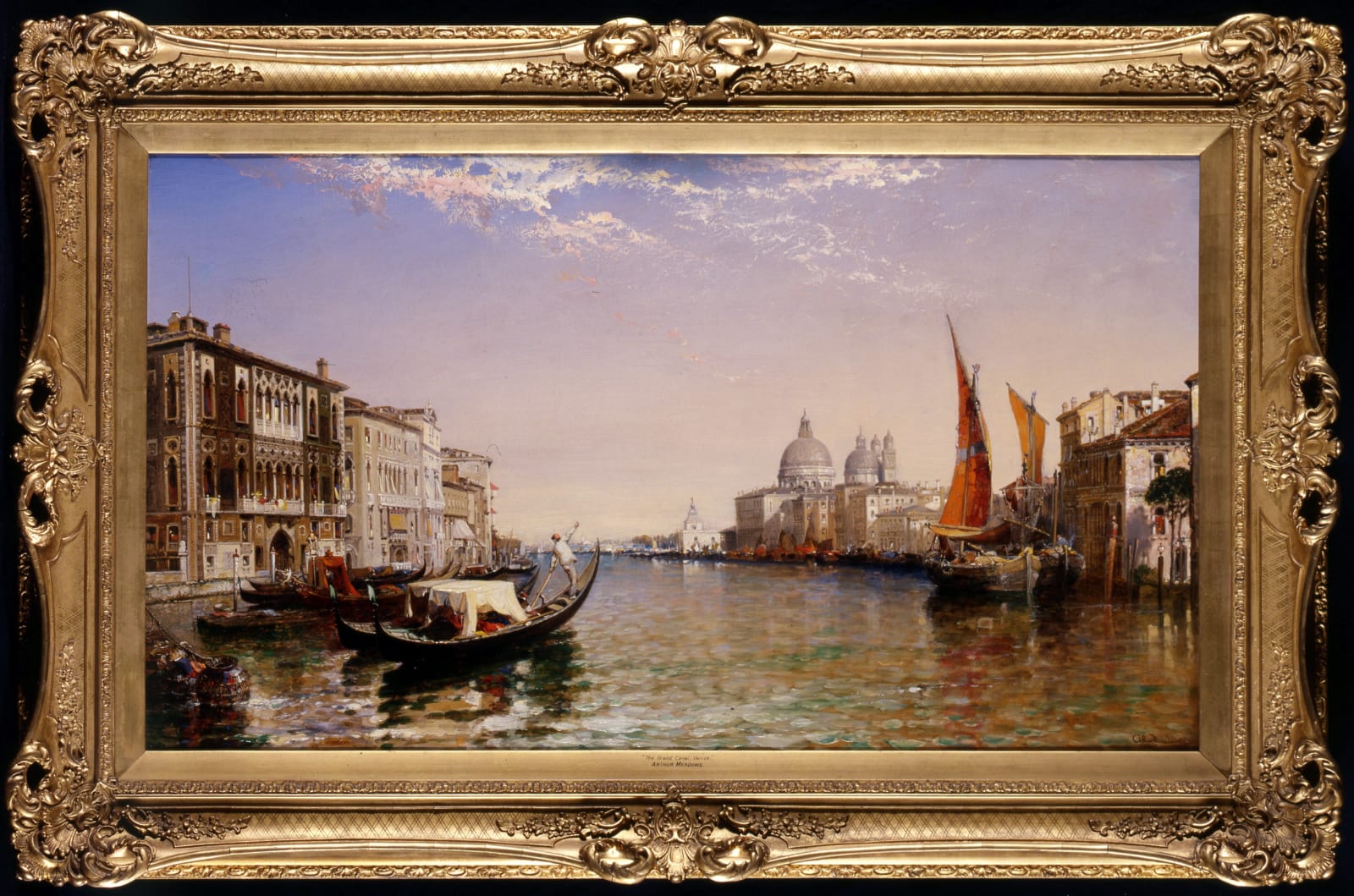Arthur Joseph Meadows (1843-1907)
Arthur Joseph Meadows (1843-1907)
"The Grand Canal, Venice"
Oil on canvas, signed and dated 1897
61 x 107 cm.
Arthur Joseph Meadows was one of the most talented members of a family with a rich artistic heritage. His paternal grandfather, William Meadows (b. circa 1753 - d 1847) was an actor and singer while his father, James Meadows Snr. (1798-1863) was a very able painter of coastal and seascape scenes. Like his father, Arthur Josephexcelled at depicting coastal and harbour views but he is best known for his magnificent Venetian panoramas, painted toward the end of his career, and now very much sought after. As an avid traveller he went on extensive painting expeditions throughout Europe, travelling to France, Holland, Belgium, Germany and especially Italy. An oil by him of fishing boats off a jetty is now housed at the National Maritime Museum, Greenwich.
His father and mother, Ann née Cross (b. 1802) raised five sons and three daughters. All of the sons became artists; of them Arthur Joseph and his second eldest brother, James Edward (1828-89) were undoubtedly the most talented. James Edward specialized in painting idyllic rural scenes, as did the eldest son, William (circa 1825-1910) and the second youngest son, Edwin Louis (b. circa 1838). The third son, Alfred John (b. circa 1833) followed his father's early career as a theatrical scene painter and became property manager of the Lyceum Theatre, London.
Born on 9th October 1843 in Bow in the East End of London, Arthur Joseph was the seventh child and youngest son. Like his brothers he was trained by his father and at the age of 18 made his London debut at The Royal Society of British Artists with a painting entitled 'A Wreck on the French Coast'. A total of 22 of his works hung at the Royal Society, 1862-1885. The majority were French coastal scenes while a few, such as 'Low Tide, Scheveling Sands', 1877 depicted the Dutch coast. Between 1863 and 1872 Meadows exhibited four French and English coastal scenes at the Royal Academy and from 1863 and 1867 he showed ten pictures at the British Institution. His work has often been compared to that of Clarkson Stanfield (1793-1867), reflecting both the style and subject matter of the elder master.
It was not until the late 1870's that Meadows began painting in Italy. One of the earliest of these dating from 1879 was a view of Persano, Bay of Naples, though most of his Italian paintings date from the 1890's and include others from the Bay of Naples, also of Gibraltar and Malta. Meadows also travelled north to record scenes at Lake Garda, Genoa and Bellaggio, Lake Como. However the larger majority of his later works, dating from about 1895, were Venetian views. Drawn by its beauty, Venice was a perfect setting within which Meadows could express the full range of his artistic skill, of which the present work is exemplary. Filled with strong light and described with a rich and fluid palette, Meadows captures the city's magical architecture and its Romantic spirit. Few if any of his later works hung at the public shows, rather he tended to sell them through the London dealers such as Cooling of Bond Street. Toward the end of his career he also painted a number of scenes in the South of France such as a view of Monaco, 1900 and the Riviera, Cannes, 1905.
At the age of 21 Meadows married Laura Harrison, a seamstress and pianist, who shared her husband's love of music. Arthur Joseph was an accomplished violist; he played the accordion and was also a keen step dancer and sportsman. He lived with his father in Bow until the latter's death in 1863. In about 1871 he and his family moved to Dover but by 1883 he was living in Hammersmith, West London. He eventually died of cancer, 17th November 1907. Surprisingly of his 11 children only Arthur Gordon (b. 1868 - d. aft 1930) followed his father's profession as an artist.
